William Yang on his heritage and becoming a photographer in the 70s.
I had to come to terms with being Chinese, being gay, and just feeling comfortable as a human being. There are lots of people who aren't comfortable about that, still. And so I try to be an example of being yourself and being visible. That's been my philosophy. I never consciously came out as a gay man, I was swept out by events at the time. And that was exactly what happened to me in the 70s. I was in the closet when I was in Brisbane, I came to Sydney in 1969. People were starting to come out in the early 70s, and suddenly there was this whole connection of gay people with each other, and it was really quite exciting. I also then became a photographer in Sydney as well.
Generally, my style of photography is I'm just photographing what's around me in my everyday life. At the time, I was living at Martin Sharp's mansion in Bellevue Hill and Peter Allen came to visit him. Peter was in town and he'd heard that this was a place that he should visit. He'd never met Martin before. And so he just came, to visit. I'd met Peter a few times before, just around the traps. I wouldn't say I got to know him well, but well enough to get that snap of him. So I was brushing shoulders with celebrities at that time. And I met Mel Gibson at one of the parties. And he asked me if I'd take a photograph of him because he needed a card. His parents, they used to answer all his fan mail and they needed a card to say "best wishes from Mel" or something, and answer their question. So he got me to do it. And so that's how I took those photographs of Mel. Patrick White never wanted to be interviewed, he never wanted to be photographed. But in this particular case, with the portrait that's in the gallery, Brett Whitely wanted to paint his portrait, I think for the Archibald. And Brett asked me, if I could photograph him so he could get a set of photographs of him. There was a rumour going around that I was the only person who Patrick would allow to photograph him, which wasn't true. But anyway, I never ever quashed the rumour, 'cuz it was all to my advantage. And so I took a very good set of photographs for Brett, and they were taken at Kate Fitzpatrick's place in Kings Cross, where she had a lunch to introduce Patrick to Brett.
Probably the 80s was my most productive time and all those photographs came out, because I was brushing shoulders with celebrities. But after that period, say at the end of the 80s, I started to do self-portraits. I suppose it's was the evolution of my own story when I kind of claim my own story. And the very first self-portrait was me standing in the cane fields, in the place where my uncle had been shot, William Fang Yuen, had been shot and I'd located that in my research of the event and I found the place. So I stood there in the cane fields and I somehow knew that this was an important event, because the past and the present had somehow come together in this event, which happened 72 years ago. But here I was, kind of retelling the story. And that was a very important thing, moment in my life. So I did that. One of the first ones in this cluster that I've got is called "Self Portrait #2" it came after the one of standing in the cane fields. But when I was about six years old, I'll tell you this story because almost in every interview I've ever done I've always told this story. It's become as John McDonald, the critic said, "It's become my incantation."
When I was six years old, one of the kids at school called me "Ching Chong Chinaman, born in a jar, christened in a teapot. Ha, ha, ha." I had no idea what he was talking about, although I knew from his expression he was being horrible to me. So I went home to my mother and I said to her, "Mom, I'm not Chinese, am I?" And she said, "Yes, you are." Her tone was hard, and it shocked me. And I knew in that moment, that being Chinese was like a terrible curse. And I could not rely on my mother for help. Or my brother, who was four years older than me, very much more experienced in the world. He chimed in, "And you'd better get used to it." I claim my heritage in the 80s, because the Chinese part of me was always denied and unacknowledged. I'm very happy that that has happened because my life and my art have kind of joined together. And so, I feel that I'm living my art as well as my life. And so that's very satisfying for me.
Then I'd done performance pieces, telling the personal story and realising that many of the images had stories. I realised that the handwriting makes my work more unique - my very handwriting. And so I've chosen more recently photographs that have got a story, which I can write on. And so that's usually a bit of a preference for me when choosing a photograph.
Related people
Related information
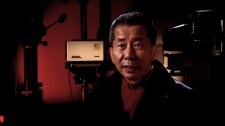
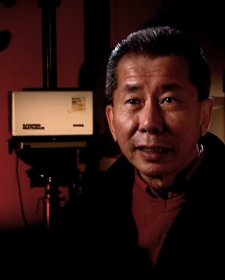
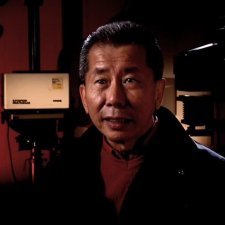
Patrick White by William Yang
Portrait storyAn interview with photographer William Yang who recalls his encounters with the author Patrick White.
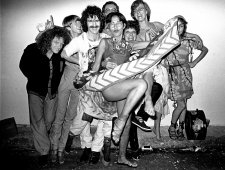
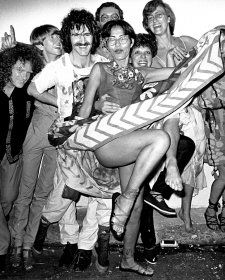
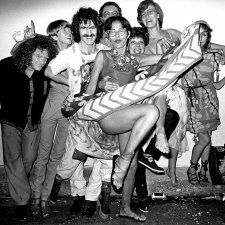
Lust for life
Magazine article, 2008Celebrated Sydney-based photographer and performer William Yang was commissioned by the National Portrait Gallery to produce a new performance work that premiered at the opening of the Gallery's new building.



William Yang
Australian Chinese
Previous exhibition, 2001William Yang's art is about the telling of stories, his work is an intriguing mixture of philosophy, autobiography, social history and documentary imbued with a sense of the artist's own curiosity, humanity and humour








